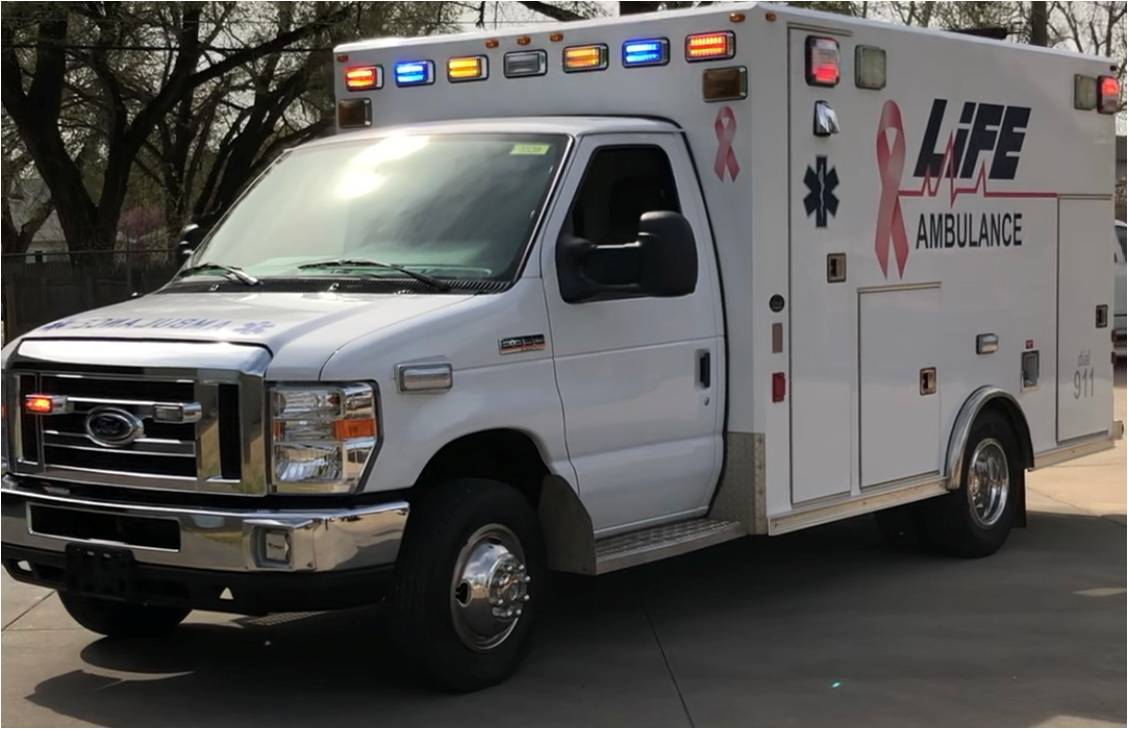
New Truck
2019 Osage Ford E-350 Type III Remount & Refurbishment
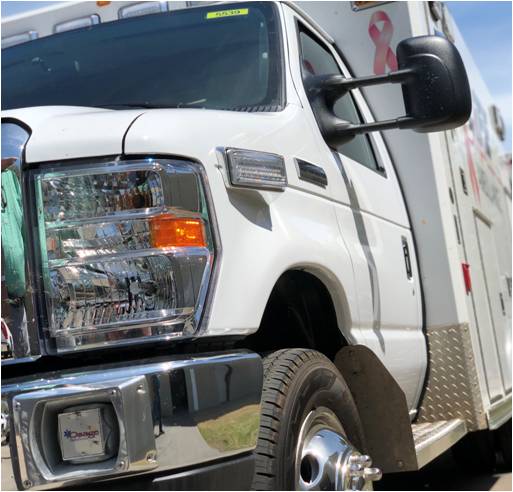

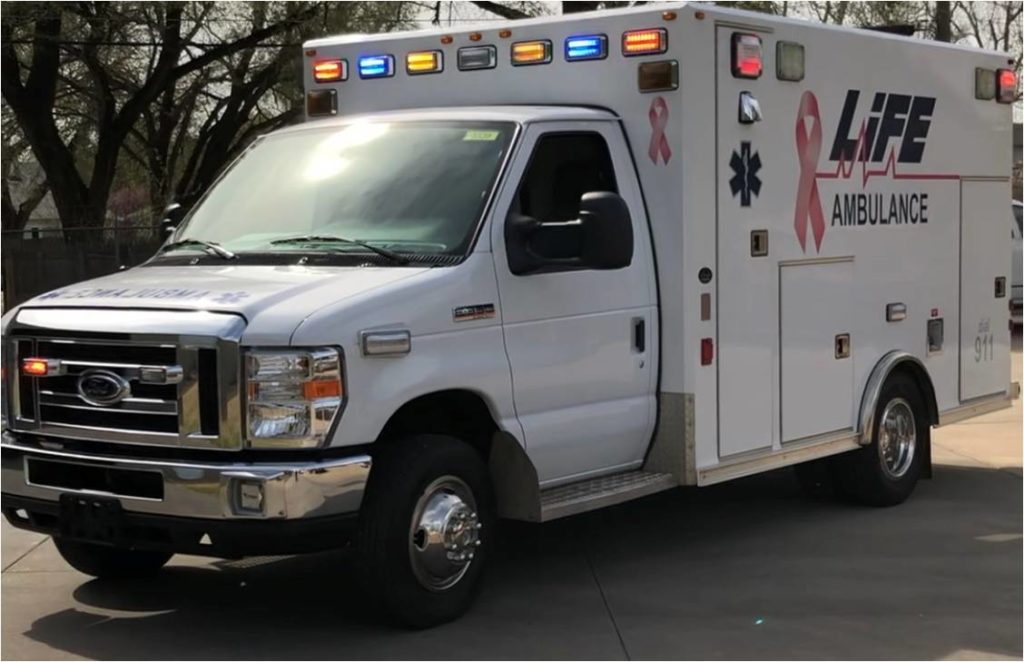

2019 Osage Ford E-350 Type III Remount & Refurbishment



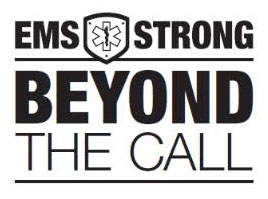
May 19-25, 2019, is the 45th annual National EMS Week. In 1974, President Gerald Ford authorized EMS Week to celebrate EMS practitioners and the important work they do in our nation’s communities.
EMS Week brings together local communities and medical personnel to honor the dedication of those who provide the day-to-day lifesaving services of medicine’s “front line.” Whether celebrated with a company cookout or a catered lunch; an open house, an awards ceremony or even quiet reflection about what it means to be an EMS practitioner, EMS Week is the perfect time to recognize EMS and all that its practitioners do for our nation.
This year, five days of EMS Week have a theme that represents the diverse nature of EMS.
2019 EMS Week Proclamation: To designate the Week of May 19-25, 2019, as Emergency Medical Services Week.
>>> Life EMS : Always Ready

Heart disease is the leading cause of death for men and women in the United States. Every year, 1 in 4 deaths are caused by heart disease. The good news? Heart disease can often be prevented when people make healthy choices and manage their health conditions. Communities, health professionals, and families can work together to create opportunities for people to make healthier choices. Make a difference in your community: Spread the word about strategies for preventing heart disease and encourage people to live heart healthy lives.
How can American Heart Month make a difference?
We can use this month to raise awareness about heart disease and how people can prevent it — both at home and in the community.
Here are just a few ideas:
How can I help spread the word?
We’ve made it easier for you to make a difference. This toolkit is full of ideas to help you take action today. For example:
Life EMS is committed to rigorous standards during critical 911 calls, our chest pain protocols include real time 12 lead ECG interpretation by our Nationally Registered & Licensed Paramedics, transmission of vital data to area hospitals to allow for direct transport to the hospital cath lab for PCI (Percutaneous Coronary Intervention), and pre-hospital care via oral Aspirin administration, and cardiac intravenous medications & drips.
Always dial 911 when you or someone you know is experiencing chest pain or stroke like symptoms! Follow this link to learn more about heart health and how to become involved in heart health!

Uncontrolled bleeding is a major cause of preventable deaths. Approximately 40% of trauma-related deaths worldwide are due to bleeding or its consequences, establishing hemorrhage as the most common cause of preventable death in trauma.*
The Stop the Bleeding Coalition is focused on raising awareness of how, with the proper training and materials, death from bleeding can be prevented. Simple measures can save many lives.
Mission: The mission of the coalition is to support the Stop the Bleed campaign by providing resources that enable collaboration and cooperation between the many people and organizations working to train and equip the nation to reduce the loss of life due to traumatic bleeding.
Who are we? The Coalition consists of people and organizations who wants to save lives. We are health care professionals, first responders, teachers, parents, teenagers, veterans, government officials and many others.
* Curry N, Hopewell S, Doree C, Hyde C, Brohi K, Stanworth S. The acute management of trauma hemorrhage: a systematic review of randomized controlled trials. Crit Care. 2011;15(2):R92.
Check out https://stopthebleedingcoalition.org/ for more information on the STOP THE BLEED campaign. The website also includes information on getting involved, training, setting up training classes as well as purchasing Hemorrhage Control Kits. As always, call our local dispatch office @ (580)242-1234, or come by Life EMS Central Stations @ 302 W. Maple in Enid to learn more. We have certified trainers on site and would be happy to set up a class for any age group or business. Life EMS is always committed to evidence based practices and will always evolve with training to better serve the citizens of Enid, Garfield County, Hennessey, and Northern Kingfisher County.
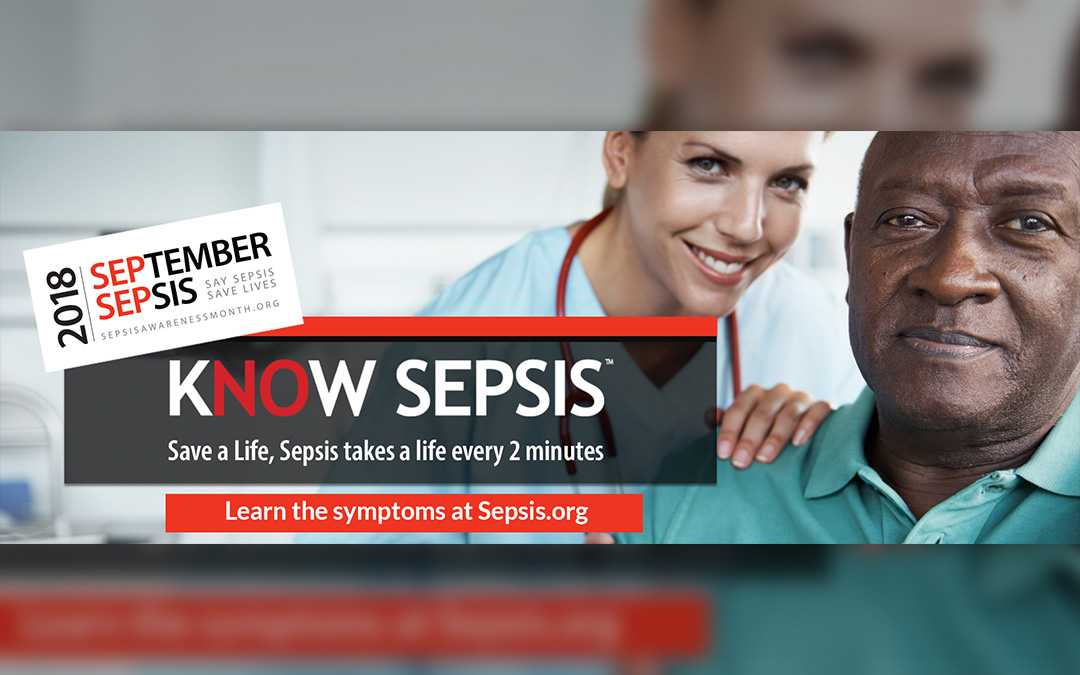
Sepsis is the body’s overwhelming and life-threatening response to infection that can lead to tissue damage, organ failure, and death. In other words, it’s your body’s over active and toxic response to an infection.
Your immune system usually works to fight any germs (bacteria, viruses, fungi, or parasites) to prevent infection. If an infection does occur, your immune system will try to fight it, although you may need help with medication such as antibiotics, antivirals, antifungals, and antiparasitics. However, for reasons researchers don’t understand, sometimes the immune system stops fighting the “invaders,” and begins to turn on itself. This is the start of sepsis.
Some people are at higher risk of developing sepsis because they are at higher risk of contracting an infection. These include the very young, the very old, those with chronic illnesses, and those with a weakened or impaired immune system.
Patients are diagnosed with sepsis when they develop a set of signs and symptoms related to sepsis. Sepsis is not diagnosed based on an infection itself. If you have more than one of the symptoms of sepsis, especially if there are signs of an infection or you fall into one of the higher risk groups, your doctor will likely suspect sepsis.
Sepsis progresses to severe sepsis when in addition to signs of sepsis, there are signs of organ dysfunction, such as difficulty breathing (problems with the lungs), low or no urine output (kidneys), abnormal liver tests (liver), and changes in mental status (brain). Nearly all patients with severe sepsis require treatment in an intensive care unit (ICU).
Septic shock is the most severe level and is diagnosed when your blood pressure drops to dangerous levels.
Sepsis has been named as the most expensive in-patient cost in American hospitals in 2014 averaging more than $18,000 per hospital stay. With over 1.5 million sepsis hospital stays in 2014 per year, that works out to costs of $27 billion each year. Studies investigating survival have reported slightly different numbers, but it appears that on average, approximately 30% of patients diagnosed with severe sepsis do not survive. Up to 50% of survivors suffer from post-sepsis syndrome. Until a cure for sepsis is found, early detection is the surest hope for survival and limiting disability for survivors.
All Life EMS Paramedic Units have progressive protocols and guidelines for early detection, hospital ED Sepsis Alerts, and early treatment via aggressive intravenous fluids, the use of inotrope medications for increasing blood pressure, and the use of respiratory treatment and medications.
Life EMS: Always Training; Always Ready.
For more information about sepsis, visit sepsisawarenessmonth.org.
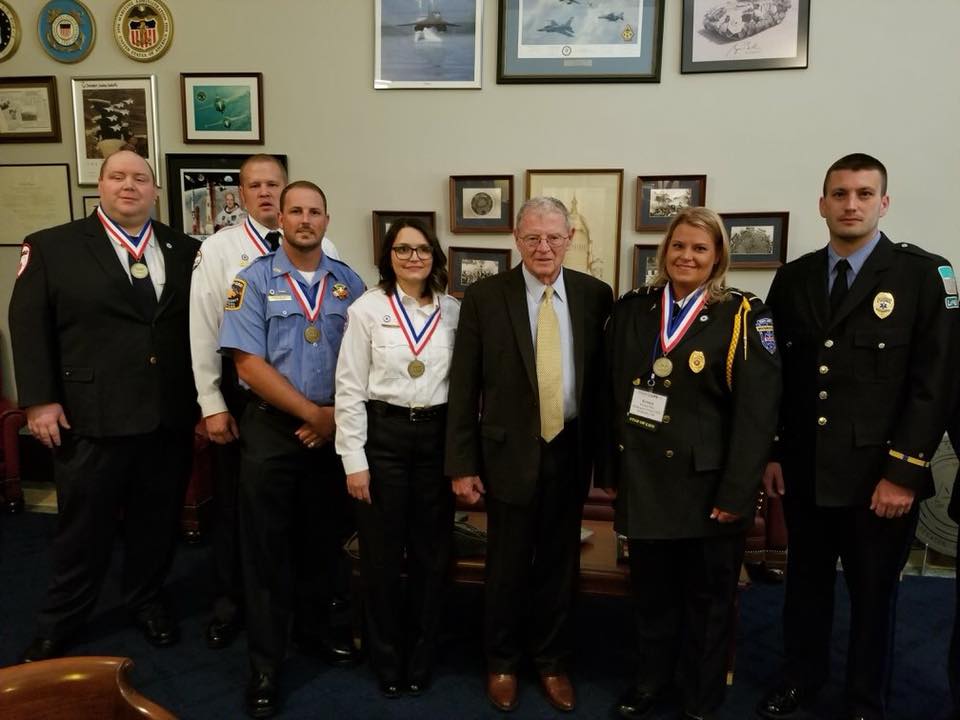
Recently Life EMS selected two outstanding, devoted, and tough-working team members as nominees for the “2018 Oklahoma Ambulance Association Star of Life” award held in Oklahoma City at the Oklahoma History Center.
The Oklahoma Ambulance Association’s Annual “Stars of Life” event celebrates the dedication and service of EMS providers and support staff from across the state. These individuals exceed the expectations of the workplace and serve as leaders in the teams they serve with.
Life EMS selected Nationally Registered Emergency Medical Technician Tawny Providence Ward and Nationally Certified Emergency Medical Dispatcher Jayeah Haske as the 2018 nominees for the Oklahoma Star of Life award.
Jayeah joined the Life EMS Emergency Dispatch Center in 2016 and has become a vital and integral part of the Life EMS team before her time in college where she earned an Associate’s Degree of Elementary Education. In the last two years at Life EMS, Jayeah has grown in leadership as one of many night owls dispatching from 6:30pm to 6:30am. She has become a Nationally Certified Emergency Medical Dispatcher from the International Academies of Emergency Dispatch with the use of Paramound ProQA Emergency Medical Dispatching criteria. Jayeah comes as a transplant to Oklahoma from her home state of Florida, but she has come to love being here, where she is able to experience the joy of two different weather seasons in one day along with a dose of earthquakes. Jayeah is married to her husband Michael, and they have three amazing, beautiful children together: Zachary 13, Price 10, and Baylee 4, all of whom reside in Enid. Life EMS congratulates Jayeah for being chosen by her fellow employees to represent Life EMS as a 2018 Star of Life.
Tawny joined the Life EMS team in 2017 as an EMT/EVO, and she has been an integral part of
the team since her first day. She generously gives of her time and does whatever is asked of her unselfishly. Tawny attended EMT-Basic training, and then she went on to attain a National Registry Certification and the State of Oklahoma EMT License. The public safety field was certainly not new territory for Tawny. Before deciding to become an EMT and pursue a career in EMS, she served as a reserve patrol and juvenile detention officer. Tawny is married to Michael Ward, and they have a two-year-old daughter, Juliana. Life EMS congratulates Tawny for being chosen by her fellow employees to represent Life EMS as a 2018 Star of Life.
Tawny was also selected this year to Represent Life EMS and the State of Oklahoma to be an “American Ambulance Association Star of Life” nominee. The American Ambulance Association’s Stars of Life program celebrates the contributions of ambulance professionals who have gone above and beyond the call of duty in service to their communities or the EMS profession. Recognize the unsung heroes at your ambulance service—nominate EMTs, Paramedics, Dispatchers, and other EMS professionals for this year’s class of Stars. Stars and their guests, accompanied by executive hosts, are celebrated in a series of events in our nation’s capital. Stars of Life honors the contributions of these heroes while shining light on the critical role EMS plays in our healthcare infrastructure.
Congratulations to Tawny and Jayeah!
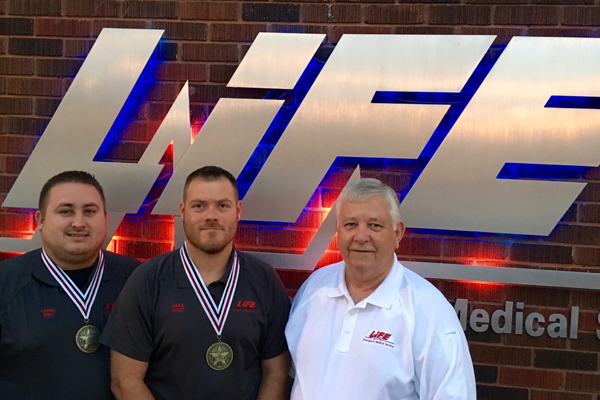
Chris and Jake Winn are not related, but they share a profession at Life EMS, earned their paramedics certifications together at Autry Technology Center, and recently traveled to Nashville for a leadership conference, returning as national champions.
Competing against 142 teams from across the United States, as well as participants from Egypt, Italy, Canada and Mexico, Chris and Jake represented Oklahoma in the HOSA Emergency Medical Technician competition and brought gold medals back with them.
“I am incredibly proud of Jake and Chris and the way they represented our profession and Life EMS on a national stage,” said Jimmy Johnson, President of Life EMS.
Working together at Life EMS in Enid, Chris and Jake attended Autry Technology Center’s Paramedic class, where they joined a student leadership organization, HOSA: Future Health Professionals, formerly known as Health Occupations Students of America. HOSA’s purpose is to develop leadership and technical skill competencies through a program of motivation, awareness and recognition. As they studied to become paramedics, Chris and Jake also participated in leadership activities and qualified for the national competition by winning at the state level.

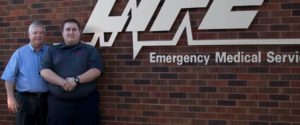 The American Ambulance Association recently honored Chris Winn, with Life EMS, as one of the top 100 EMS professionals who make a difference in the lives of patients and communities in which they serve at their national convention.
The American Ambulance Association recently honored Chris Winn, with Life EMS, as one of the top 100 EMS professionals who make a difference in the lives of patients and communities in which they serve at their national convention.
With an annual theme of “Honoring our own National Treasures,” the AAA paid tribute to these top performers—named “Stars of Life”—from across the United States and also recognized other partners who support and enhance the industry.
Winn, selected as the Life EMS Star of Life, is a Basic EMT currently studying to be a paramedic and sees this as a lifelong career, which he started early. During his senior year of high school, Winn joined the Pond Creek Volunteer Fire Department and EMS, serving his community for five years. He joined the Life EMS team in 2013. He continues his volunteer work during his time off from Life EMS.
“I love what I do at Life EMS. My career is about serving others and really is an extension of my faith, allowing me to help and care for people in my community,” said Winn.
“Life EMS and our capable team is dedicated to providing the optimum in emergency medical care to the citizens in Enid and Garfield County,” said Jimmy Johnson, President of Life EMS. “Chris exemplifies everything we expect from our staff—he is team player with a big heart and is always wiling to do anything that is asked of him. He is exceptional and deserving of this national award.”

Life EMS received the American Heart Association’s Mission: Lifeline® EMS Silver Award for implementing quality improvement measures for the treatment of patients who experience severe heart attacks.
“EMTs and paramedics play a vital part in the system of care for those who have heart attacks,” said Nancy Brown, Chief Executive Officer of the American Heart Association/American Stroke Association. “Since they often are the first medical point of contact, they can shave precious minutes of life-saving treatment time by activating the emergency response system that alerts hospitals. We applaud Life EMS for achieving this award that shows it meets evidence-based guidelines in the treatment of people who have severe heart attacks.”
“Life EMS is dedicated to providing the optimum in emergency medical care to the citizens in Enid and Garfield County, and the Lifeline program is a key component by implementing processes for improving STEMI systems of care for all STEMI patients,” said Jimmy Johnson, President of Life EMS. “We are pleased to be recognized for our dedication and achievements in emergency medical care for STEMI patients in our service area.”
Every year, more than 250,000 people in the US experience a STEMI, (ST Elevation Myocardial Infarction) a type of heart attack caused by a complete blockage of blood flow to the heart that requires timely treatment. To prevent death, it is critical to restore blood flow as quickly as possible, either by surgically opening the blocked vessel or by giving clot-busting medication.
Unfortunately, a significant number don’t receive prompt reperfusion therapy, which is critical in restoring blood flow. Mission: Lifeline seeks to save lives by closing the gaps that separate STEMI patients from timely access to appropriate treatments. Mission: Lifeline’s EMS recognition program recognizes those emergency responders for their efforts in improving STEMI systems of care and improving the quality of life for these patients.
Emergency Medical System providers are vital to the success of Mission: Lifeline. EMS agencies provide access to 12-lead ECG machines (devices that measures the electrical activity of the heartbeat and can help medical personnel determine if a heart attack has occurred), and follow protocols derived from American Heart Association/American College of Cardiology guidelines. The correct tools and training allow EMS providers to rapidly identify the STEMI, promptly notify the medical center, and trigger and early response from the awaiting hospital personnel.
The American Heart Association’s Mission: Lifeline® program helps hospitals and emergency medical services develop systems of care that follow proven standards and procedures for STEMI patients. The program works by mobilizing teams across the continuum of care to implement American Heart Association/American College of Cardiology clinical treatment guidelines. For more information, visit heart.org/missionlifeline and heart.org/quality.
Recent Comments